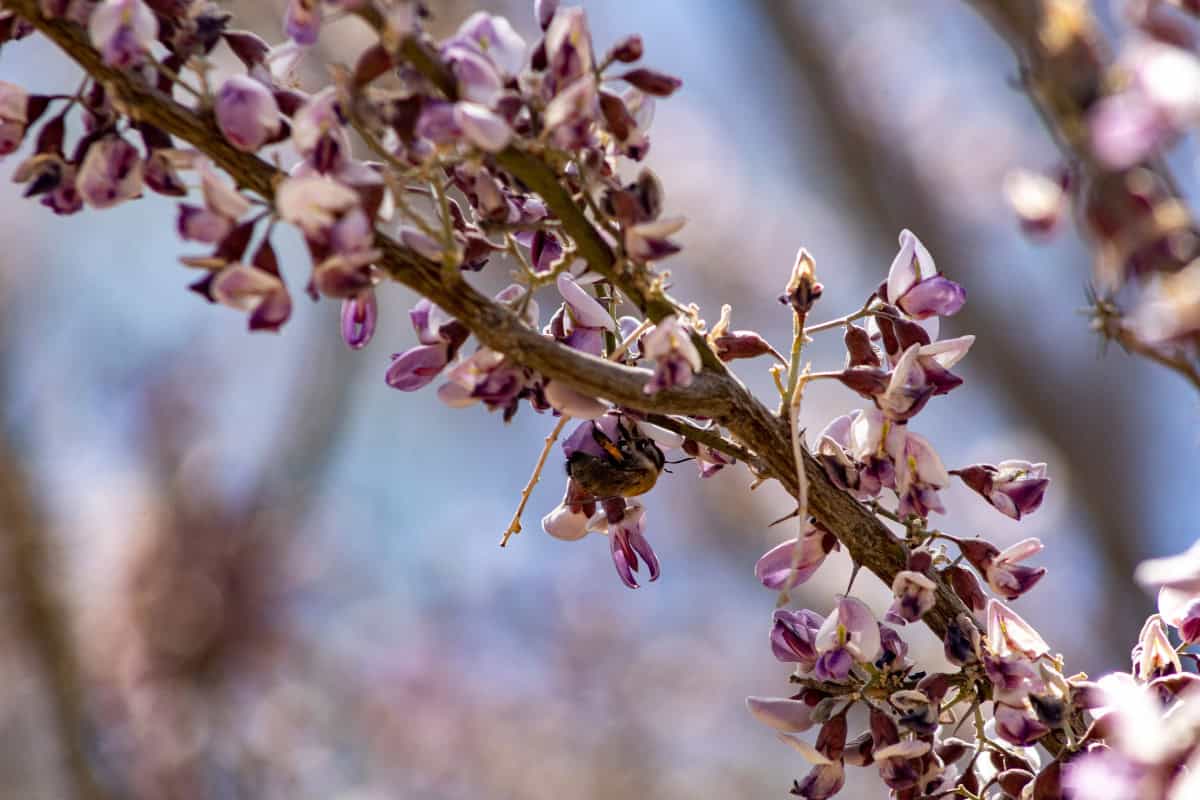
This comprehensive Ironwood firewood profile dives into what many consider the toughest, most reliable burning wood you’ll ever encounter, delivering an impressive 28,700 BTUs per cord.
If you’re looking for firewood that truly lives up to its name, Ironwood offers the kind of rock-solid performance that makes seasoned fire pit enthusiasts nod with respect – though you’ll definitely earn every BTU when it comes to processing this incredibly dense wood.
Quick Reference Stats
- Wood Type: Hardwood
- BTU Rating: 28,700 BTUs per cord
- Ease of Splitting: Very Difficult (1/5 scale)
- Seasoning Time: 12-18 months
- Smoke Production: Very Low
- Spark/Pop Factor: Very Low
- Scent Profile: Pleasant – Clean, mild aroma with subtle earthy notes
Overview & Identification
Let’s be honest – Ironwood doesn’t get its name by accident. This stuff is genuinely tough as nails, and when you pick up a piece, you’ll immediately understand why it’s considered one of the premium heating woods in North America. The density is remarkable, almost shocking when you’re used to handling regular hardwoods.
What makes Ironwood special isn’t just the impressive BTU numbers (though 28,700 per cord certainly gets your attention). It’s the way this wood burns – steady, reliable, and with the kind of long-lasting coals that keep radiating heat long after other woods would have burned down to ash.
Common Names: Ironwood, American Hornbeam, Blue Beech, Musclewood, Eastern Hop-hornbeam
Scientific Name: Carpinus caroliniana (American Hornbeam) or Ostrya virginiana (Eastern Hop-hornbeam)
Tree Characteristics: You’ll recognize Ironwood by its distinctive smooth, gray bark that has an almost muscle-like appearance – hence the nickname “Musclewood.” These trees stay relatively small (20-40 feet), but don’t let the size fool you. The wood is incredibly dense and surprisingly heavy for its size.
Geographic Distribution
Where You’ll Find It: Ironwood grows throughout eastern North America, from Nova Scotia down to northern Florida and west to Minnesota and eastern Texas. It’s pretty common in deciduous and mixed forests, though you might not notice it since these trees tend to hang out in the understory.
Availability: Here’s where things get interesting. While the trees are fairly common, you won’t typically find Ironwood sold by itself at your local firewood dealer. It’s usually mixed in with other hardwoods, which can be either a pleasant surprise or a processing challenge, depending on your perspective.
Growing Conditions: Ironwood is remarkably adaptable – it thrives in various forest environments and soil types. This adaptability contributes to its wide distribution and the consistent quality you can expect from the wood.
Burning Characteristics
Heat Output & Performance
The numbers don’t lie – at 28,700 BTUs per cord, Ironwood ranks right up there with the best heating woods available. But here’s what the numbers don’t tell you: this wood burns with a steadiness that’s almost meditative. Once you get it going, it settles into this incredible, consistent burn pattern that just keeps delivering heat.
- BTU Content: Exceptional performance that rivals oak and hickory
- Burn Duration: Burns extremely slowly – you’ll be amazed how long a single log lasts
- Coaling Properties: Creates some of the best, longest-lasting coals you’ll ever see
- Flame Characteristics: Steady, intense flames with beautiful golden color
Ignition & Fire Management
Now, let’s talk reality for a moment. Getting Ironwood lit isn’t exactly like lighting kindling. The density that makes it burn so well also means you need a good, established fire before adding it to the mix. Think of it as the marathon runner of firewood – it needs a proper warm-up, but once it gets going, it’s incredibly reliable.
- Ease of Lighting: Challenging due to density – patience definitely required
- Best Fire Stage: Excellent primary fuel once your fire is well-established
- Burn Rate: Very slow consumption means maximum value per log
- Heat Consistency: Remarkably steady – no surprises or dramatic temperature swings
Sensory Experience
Smoke Profile
One of Ironwood’s best features is how cleanly it burns. When properly seasoned, this wood produces minimal smoke – we’re talking nearly invisible levels. This makes it perfect for situations where you want serious heat without the smoke issues that can drive people away from the fire pit.
- Smoke Volume: Very low when properly seasoned
- Smoke Color: Nearly clear with efficient combustion
- Smoke Flavor: Clean and neutral – great for cooking
- Creosote Production: Very low due to efficient burning
Sound & Visual
Ironwood is refreshingly quiet. While some woods crackle and pop constantly, Ironwood burns with a gentle, steady presence. The flames are absolutely beautiful – intense and consistent with that rich golden color that makes for great fire-watching.
- Crackling/Popping: Minimal – burns quietly and steadily
- Sparking Tendency: Very low – excellent safety profile
- Flame Appearance: Gorgeous, steady flames with consistent color
Aroma
The scent is pleasantly subtle – clean and mild with just a hint of earthiness. It’s sophisticated without being overpowering, making it perfect for situations where you want the benefits of the fire without competing aromas.
Processing & Preparation
Splitting Characteristics
Okay, let’s address the elephant in the room. Splitting Ironwood can be genuinely challenging. This isn’t just “difficult for a hardwood” – this is “you might want to reconsider your life choices” difficult if you’re trying to split it by hand.
- Ease of Splitting: Extremely difficult – hydraulic splitter strongly recommended
- Grain Pattern: Often interlocked and twisted, adding to the challenge
- Tools Needed: Honestly, save yourself the frustration and use a hydraulic splitter
- Best Splitting Conditions: If you must hand-split, do it when green – it only gets harder
Seasoning Requirements
The good news is that Ironwood seasons reasonably well for such a dense wood. Give it 12-18 months with proper air circulation, and you’ll have excellent burning material. The density that makes it hard to split actually helps it store well once seasoned.
- Drying Time: 12-18 months for optimal results
- Moisture Content: Target 15-20% for best performance
- Seasoning Tips: Stack with maximum airflow – the density means slower drying
- Storage Considerations: Stores exceptionally well once seasoned
Processing Notes
Fair warning – Ironwood is tough on equipment. Keep your chainsaw chains sharp and expect to work a bit harder than usual. But the payoff in heating performance makes the extra effort worthwhile for serious fire pit enthusiasts.
Specialized Uses
Cooking Applications
Ironwood’s clean burn and neutral flavor make it excellent for cooking. The steady, controllable heat is perfect for maintaining consistent temperatures, and the lack of strong aromatic compounds means it won’t overpower your food.
- Cooking Suitability: Excellent due to clean burn and steady heat
- Flavor Profile: Neutral and clean – won’t interfere with food flavors
- Cooking Stage: Outstanding for maintaining consistent cooking temperatures
- Food Safety: Clean burning makes it ideal for food preparation
Pest Control
While not its primary selling point, Ironwood’s dense smoke and natural compounds do provide some pest deterrent benefits. It’s not as effective as some aromatic woods, but every little bit helps during mosquito season.
Pros & Cons
Advantages
- Elite BTU output that truly delivers on the promise of serious heat
- Burns incredibly cleanly with minimal smoke issues
- Excellent safety profile with very low sparking
- Creates outstanding, long-lasting coals for extended heating
- Clean, pleasant aroma that won’t overwhelm
- Exceptional burn duration – maximum value per log
- Stores virtually forever once properly seasoned
Disadvantages
- Extremely challenging to split – definitely not a hand-tool job
- Hard on processing equipment and chainsaw chains
- Can be difficult to source as dedicated firewood
- Requires patience during the seasoning process
- Significantly heavier than most woods – plan accordingly
Best Practices & Tips
Fire Pit Optimization
Ironwood works best when you approach it with respect for what it is. Don’t expect to build a quick fire with this wood – instead, think of it as the foundation for serious, long-term heating sessions.
- Ideal Fire Size: Perfect for medium to large fires where heat duration matters
- Mixing Recommendations: Use with easier-lighting woods for fire building
- Safety Considerations: Low sparking makes it ideal for open fire pits
- Weather Suitability: Outstanding in cold weather and windy conditions
Purchasing & Storage
When you find Ironwood, the pieces will feel noticeably heavier than other hardwoods. That density is your quality indicator – if it feels surprisingly heavy for its size, you’ve got the real deal.
- What to Look For: Dense, heavy pieces that feel substantial
- Pricing Expectations: Premium pricing when available separately
- Storage Lifespan: Virtually unlimited when properly stored
Bottom Line
Ironwood represents serious firewood for serious fire pit enthusiasts. If you’re willing to invest in proper processing equipment and appreciate the kind of steady, reliable performance that separates premium woods from the rest, Ironwood delivers an experience that justifies its reputation.
This isn’t firewood for casual users or those looking for easy solutions. But if you want wood that burns with the kind of consistency and heat output that makes cold nights genuinely comfortable, Ironwood is hard to beat.
Best For: Experienced users who appreciate premium performance, serious heating applications, long burn sessions Skip If: You need easy splitting, budget-friendly options, or prefer readily available woods
Ironwood Quick Reference Table
| Characteristic | Rating/Value | Notes |
|---|---|---|
| BTU per Cord | 28,700 | Elite heat output |
| Density | Extremely High | Lives up to the “ironwood” name |
| Seasoning Time | 12-18 months | Patience pays off |
| Splitting Difficulty | Very Difficult (1/5) | Hydraulic splitter essential |
| Smoke Production | Very Low | Exceptionally clean burning |
| Spark/Pop Factor | Very Low | Outstanding safety profile |
| Ignition Ease | Challenging | Needs established fire |
| Burn Rate | Extremely Slow | Maximum efficiency per log |
| Coaling Ability | Outstanding | Hours of consistent heat |
| Scent Quality | Pleasant | Clean, mild earthy notes |
| Cooking Suitability | Excellent | Perfect neutral burn |
| Cost Level | Premium | Worth it for serious users |
| Best Use | Maximum heat, long burns | The enthusiast’s choice |
| Overall Rating | ⭐⭐⭐⭐⭐ | Elite performance for the dedicated |
Related Resources: Ironwood Firewood Profile
Last updated: 8/16/2025


